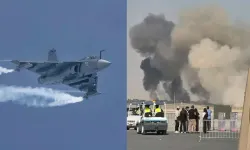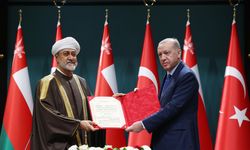"Partly, and maybe to a large extent, thanks to US President Donald Trump during his first term in 2017, European NATO countries have increased their defense budgets," Rutte noted. "However, the current 2% target is no longer sufficient to ensure the alliance’s collective security."
"We are producing in one year what Russia can manufacture in three months."Rutte expressed concerns about NATO’s industrial production capabilities, emphasizing that the alliance's defense output lags significantly behind its adversaries. "We are producing in one year what Russia can manufacture in three months. China is outpacing the US by producing six times faster. This is a crisis mode situation," he said.
The NATO chief also addressed Europe’s dependency on the United States for defense support, particularly in the context of the ongoing war in Ukraine. He highlighted the need for European nations to shoulder a greater share of the burden: "If the new Trump administration continues supplying Ukraine from its defense industrial base, Europe must be prepared to cover the costs."
Europe’s Shift Toward Higher Defense Spending
Several countries have begun responding to calls for increased military spending. Germany has met the 2% target, with €90.6 billion ($93.3 billion) allocated to defense in 2024. The Netherlands also reached the 2% threshold in 2024, marking a significant departure from its historically lower budgets, which once fell to just 1% of GDP in 2013.The Dutch government’s Defense Financial Obligations Act has ensured sustained investments in modernizing the armed forces. These include upgrades in missile defense, cybersecurity, and electronic warfare systems, along with expanded personnel and training programs. "This achievement underscores the Netherlands' commitment to NATO's collective defense goals," said Rutte, adding that further increases in defense budgets may be necessary to address technological and geopolitical challenges.
However, balancing defense expenditures with other national priorities, such as healthcare and education, remains a contentious issue. Vice Chancellor Robert Habeck of Germany has dismissed proposals to raise NATO’s spending target to 5%, calling such demands "unrealistic." Instead, Germany has advocated for a more achievable medium-term goal of 3.5%.
Broader Implications for NATO’s Future
The NATO chief’s remarks come amid growing concerns over the alliance's ability to adapt to a rapidly changing security environment. Rutte highlighted the need for innovation, collective procurement, and stronger collaboration between NATO members and defense industries.
“China’s military products are now of much better quality than 20 years ago, often matching or exceeding US capabilities,” Rutte warned. “We must innovate more, buy collectively, and engage in large-scale contracts with industries to ensure NATO remains competitive.”
The war in Ukraine has further highlighted the critical importance of a well-funded and technologically advanced alliance. NATO officials have reiterated that the 2% GDP benchmark should be seen as a minimum, urging member states to aim higher to close capability gaps and prepare for future challenges.
As global tensions rise, NATO faces mounting pressure to strengthen its military readiness. With adversaries like Russia and China ramping up defense production and technological advancements, the alliance’s ability to maintain collective security depends on the willingness of its members to prioritize defense investments.
See also:
The Netherlands achieves NATO’s 2% GDP defense spending target Germany rejects Trump’s 5% NATO defense spending target






